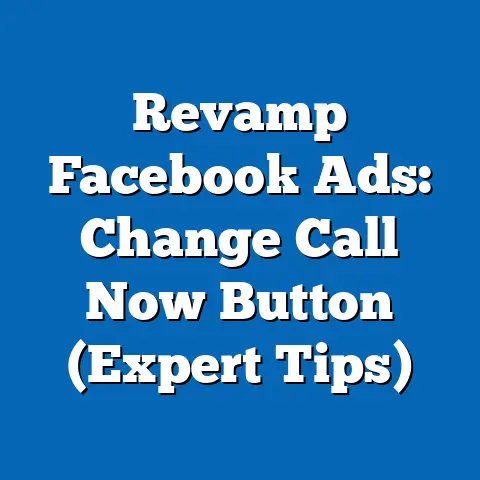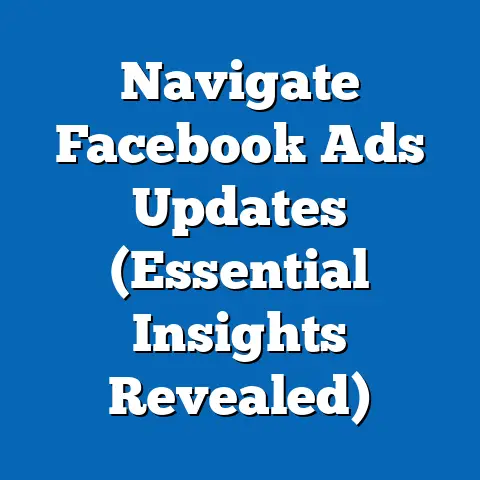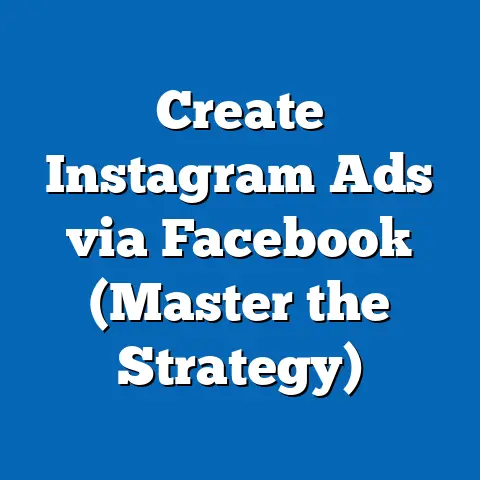Uncover New Connections on Facebook (Essential Guide)
Are you scrolling endlessly through Facebook, seeing updates from hundreds, maybe even thousands, of “friends,” yet feeling utterly disconnected? Do you ever wonder if you’re truly harnessing the power of this massive platform to forge meaningful relationships? In today’s digital age, it’s easy to accumulate connections, but it’s far more challenging to cultivate genuine, lasting bonds. How many meaningful connections have you made this month, connections that truly enrich your life? I’ve been there, lost in the sea of superficial interactions. But through conscious effort and strategic approaches, I’ve learned how to use Facebook to build a network of people who inspire, support, and challenge me. This guide is your roadmap to doing the same. Let’s dive in and transform those fleeting online encounters into real, valuable connections.
Section 1: Understanding the Facebook Ecosystem
1.1 Overview of Facebook as a Networking Tool
Facebook, born from humble beginnings as a Harvard-only social network, has morphed into a global behemoth, a digital town square where billions congregate daily. It’s no longer just about sharing vacation photos or birthday greetings; it’s a powerful tool for networking, both personally and professionally.
Consider this: Facebook boasts nearly 3 billion monthly active users (as of early 2024). That’s almost half the world’s population! And the demographics are incredibly diverse, spanning age groups, professions, and cultural backgrounds. This vast and varied audience presents an unparalleled opportunity to connect with people you might never encounter otherwise.
But here’s where I think many people miss the point: Facebook isn’t just about quantity; it’s about quality. It’s not enough to simply amass a large number of friends or followers. The real value lies in building meaningful relationships, finding communities that resonate with your interests, and expanding your professional horizons.
I remember when I first started using Facebook, I treated it like a digital scrapbook. I’d post updates about my day, share funny memes, and passively scroll through my newsfeed. I had hundreds of “friends,” but I felt surprisingly isolated. It wasn’t until I started using Facebook more strategically – joining relevant groups, engaging in thoughtful conversations, and sharing content that reflected my passions – that I began to forge genuine connections. That’s when Facebook transformed from a time-wasting distraction into a valuable networking tool.
1.2 Types of Connections on Facebook
Facebook offers a diverse tapestry of connection types, each serving a unique purpose and catering to different needs. Let’s break down the most common types:
- Friends: These are the connections you actively cultivate, often individuals you know in real life or have met through mutual acquaintances. They form the core of your personal network.
- Family: Facebook is a great way to stay connected with relatives, especially those who live far away. Sharing family photos, celebrating milestones, and simply staying in touch becomes easier than ever.
- Colleagues: Connecting with colleagues on Facebook can foster a sense of camaraderie and facilitate collaboration, especially in remote work environments.
- Interest Groups: These are communities centered around shared hobbies, passions, or interests. Joining relevant groups is a fantastic way to meet like-minded individuals and expand your knowledge.
- Professional Networks: Facebook can also be used to build professional connections, connect with industry leaders, and explore career opportunities.
I’ve found that diversifying my connections across these categories has enriched my Facebook experience immensely. I’m not just seeing updates from my immediate circle of friends; I’m also engaging with people who share my passions, learning from industry experts, and discovering new opportunities.
For instance, I’m a member of several writing groups on Facebook. These groups have been invaluable in helping me connect with fellow writers, get feedback on my work, and learn about new publishing opportunities. I’ve also made some genuine friendships through these groups, people who understand the challenges and joys of being a writer.
1.3 The Algorithm’s Role
Ah, the dreaded algorithm! It’s the invisible hand that shapes our Facebook experience, determining what we see and who sees us. Understanding how the algorithm works is crucial for uncovering new connections.
In a nutshell, the Facebook algorithm prioritizes content that it believes you’ll find most engaging. It considers a variety of factors, including:
- Relationship: How often you interact with a particular person or page.
- Content Type: Whether you prefer photos, videos, links, or text updates.
- Popularity: The number of likes, comments, and shares a post receives.
- Timeliness: How recently the post was published.
So, how does this affect your ability to make new connections? Well, if you’re only passively scrolling through your newsfeed, you’re likely only seeing content from the same people and pages. To break out of that echo chamber, you need to actively engage with content from a wider range of sources.
I remember feeling frustrated that I was only seeing updates from a small fraction of my “friends.” It felt like Facebook was filtering out everyone else. That’s when I started paying closer attention to the algorithm. I realized that I needed to actively seek out content from people I wanted to connect with. I started commenting on their posts, sharing their updates, and even sending them private messages. Slowly but surely, I started seeing more of their content in my newsfeed, and we began to build a genuine connection.
Takeaway: The Facebook algorithm isn’t an insurmountable obstacle. By understanding how it works and actively engaging with content from a wider range of sources, you can significantly increase your chances of uncovering new connections. Next, let’s discuss how to optimize your profile to attract the right connections.
Section 2: Strategies for Expanding Your Network
2.1 Optimizing Your Profile
Think of your Facebook profile as your digital storefront. It’s the first impression you make on potential connections, so it’s crucial to make it count.
Here are some key elements to consider:
- Profile Picture: Choose a clear, professional-looking photo that accurately represents you. Avoid blurry or outdated photos. A friendly smile goes a long way!
- Cover Photo: Use a visually appealing cover photo that reflects your interests, passions, or profession. It could be a photo of you engaging in a hobby, a scenic landscape, or a professional headshot.
- Bio: Write a concise and compelling bio that highlights your key skills, interests, and what you’re looking to connect with others about. Avoid generic phrases like “just living life.” Be specific and authentic.
- Privacy Settings: Carefully review your privacy settings to ensure that you’re comfortable with the information you’re sharing publicly. You can control who can see your posts, who can send you friend requests, and who can find you in searches.
I’ve seen so many profiles that are either incomplete or filled with outdated information. It’s like walking into a store that’s dimly lit and disorganized – it doesn’t inspire confidence. Take the time to optimize your profile, and you’ll be amazed at the difference it makes.
For example, I used to have a very generic bio on my Facebook profile. It simply said, “Writer and traveler.” It wasn’t until I updated it to something more specific – “Freelance writer specializing in travel and technology. Passionate about sustainable tourism and exploring new cultures” – that I started attracting more relevant connections. People who were interested in travel, technology, or sustainable tourism started reaching out to me, and I was able to build some really valuable relationships.
2.2 Joining and Engaging in Groups
Facebook groups are treasure troves of potential connections. They’re communities centered around shared interests, hobbies, professions, and more. Joining relevant groups is a fantastic way to meet like-minded individuals and expand your network.
But it’s not enough to simply join a group and lurk in the shadows. To truly benefit from groups, you need to actively engage. Here are some tips:
- Introduce Yourself: When you first join a group, take a moment to introduce yourself and share your interests. This is a great way to make a good first impression and start building relationships.
- Participate in Discussions: Don’t be afraid to share your thoughts, ask questions, and offer advice. Thoughtful and insightful contributions will make you stand out and attract the attention of other members.
- Share Relevant Content: If you come across an article, video, or resource that you think would be valuable to the group, don’t hesitate to share it. This demonstrates your expertise and helps to build your credibility.
- Be Respectful: Always be respectful of other members, even if you disagree with their opinions. Disagreements are inevitable, but they should be handled with courtesy and professionalism.
I’ve made some of my closest Facebook connections through groups. I remember joining a travel photography group a few years ago. I was a complete beginner, but I was eager to learn. I started asking questions, sharing my photos, and participating in discussions. I quickly became an active member of the community, and I made some amazing friends who shared my passion for photography. We’ve even met up in person for photo shoots and travel adventures!
2.3 Utilizing Facebook Events
Facebook events are another great way to meet new people and expand your network. Whether you’re attending a local concert, a professional conference, or a virtual workshop, events offer opportunities to connect with individuals who share your interests.
Here are some strategies for maximizing your networking opportunities at Facebook events:
- RSVP in Advance: Let the organizers know that you’re planning to attend. This will help them get an accurate headcount and plan accordingly.
- Check the Guest List: See who else is attending the event and identify potential connections. You can even send them a message beforehand to introduce yourself and express your interest in meeting them.
- Engage in Conversations: Don’t be afraid to strike up conversations with other attendees. Ask them about their interests, their work, or their reasons for attending the event.
- Exchange Contact Information: If you have a good conversation with someone, don’t forget to exchange contact information so you can stay in touch.
- Follow Up After the Event: Send a thank-you message to the organizers and connect with the people you met on Facebook or LinkedIn.
I’ve attended countless Facebook events over the years, and I’ve always found them to be a valuable networking opportunity. I remember attending a digital marketing conference a few years ago. I was a bit nervous, as I didn’t know anyone. But I decided to step outside my comfort zone and start talking to people. I met some amazing marketers, learned a ton of new strategies, and even landed a few freelance gigs!
2.4 Leveraging Facebook Pages
Facebook pages aren’t just for businesses and brands; they can also be a powerful tool for individuals to build their personal brand and connect with a wider audience.
Creating a Facebook page allows you to:
- Showcase Your Expertise: Share your knowledge, insights, and opinions on topics that you’re passionate about.
- Build a Following: Attract followers who are interested in your content and perspectives.
- Engage with Your Audience: Interact with your followers through comments, messages, and live videos.
- Promote Your Work: Share your articles, videos, podcasts, or other creative works.
I’ve seen many individuals use Facebook pages to build a strong online presence and connect with like-minded individuals. For example, I follow a travel blogger who uses her Facebook page to share stunning photos, travel tips, and personal stories. She has a large and engaged following, and she’s built a successful business around her travel blog.
Takeaway: Expanding your network on Facebook requires a multi-faceted approach. Optimize your profile, join relevant groups, attend events, and leverage Facebook pages to connect with a wider audience. The next step is learning how to build meaningful connections, which we’ll cover in the next section.
Section 3: Building Meaningful Connections
3.1 The Art of Communication
Building meaningful connections on Facebook, or anywhere for that matter, hinges on the art of communication. It’s not just about sending a friend request; it’s about initiating conversations, fostering genuine interactions, and building relationships over time.
Here are some tips for effective communication on Facebook:
- Be Authentic: Don’t try to be someone you’re not. Be genuine and let your personality shine through.
- Listen Actively: Pay attention to what others are saying and respond thoughtfully. Ask follow-up questions and show that you’re genuinely interested in their perspectives.
- Be Empathetic: Try to understand where others are coming from, even if you don’t agree with their opinions.
- Be Respectful: Treat others with courtesy and respect, even in the face of disagreement.
- Be Engaging: Share your thoughts, ideas, and experiences in a way that is both informative and entertaining.
I’ve learned that the key to building meaningful connections is to focus on building rapport. It’s about finding common ground, sharing personal stories, and creating a sense of connection.
I remember reaching out to a fellow writer on Facebook who I admired. I had been following her work for a while, and I was impressed by her talent and her passion. I sent her a private message, expressing my admiration for her writing and asking if she’d be willing to connect. To my surprise, she responded! We started chatting back and forth, and we quickly discovered that we had a lot in common. We both loved writing, traveling, and exploring new cultures. We’ve since become good friends, and we regularly support each other’s work.
3.2 Personalizing Connection Requests
In a world of generic friend requests, a personalized message can make all the difference. It shows that you’ve taken the time to learn about the person and that you’re genuinely interested in connecting with them.
Here are some tips for personalizing your connection requests:
- Mention a Shared Interest: If you have a shared interest, mention it in your message. This is a great way to break the ice and show that you have something in common.
- Reference Their Work: If you admire their work, mention it in your message. Tell them what you like about it and why you’re interested in connecting with them.
- Ask a Question: Asking a question is a great way to start a conversation and show that you’re genuinely interested in learning more about them.
- Be Concise: Keep your message short and to the point. People are busy, so don’t waste their time with lengthy introductions.
I’ve found that personalized connection requests have a much higher acceptance rate than generic ones. I remember sending a personalized connection request to a marketing executive who I admired. I mentioned that I had read his book and that I was impressed by his insights on social media marketing. To my surprise, he accepted my request and even sent me a thank-you message! We’ve since become valuable connections on Facebook, and I’ve learned a lot from him.
Here’s an example of an effective personalized message:
“Hi [Name], I came across your profile through the [Group Name] group and was impressed by your insights on [Topic]. I’m also passionate about [Topic] and would love to connect and learn more from you.”
3.3 Following Up and Nurturing Relationships
Building meaningful connections is an ongoing process, not a one-time event. It’s important to follow up with new connections and nurture relationships over time.
Here are some strategies for following up and nurturing relationships on Facebook:
- Send a Thank-You Message: After someone accepts your friend request, send them a thank-you message to express your appreciation.
- Engage with Their Content: Like, comment, and share their posts to show that you’re interested in what they have to say.
- Send Private Messages: Send private messages to check in, ask questions, or share relevant content.
- Offer Help: If you see an opportunity to help someone, don’t hesitate to offer your assistance.
- Stay in Touch Regularly: Make an effort to stay in touch with your connections on a regular basis, even if it’s just a quick check-in.
I’ve found that the key to nurturing relationships is to be consistent and genuine. It’s about showing that you care about the other person and that you’re invested in building a long-term relationship.
I have a group of close friends on Facebook who I met through various online communities. We regularly check in with each other, share our successes and challenges, and offer support and encouragement. These relationships have been invaluable to me, both personally and professionally.
Takeaway: Building meaningful connections on Facebook requires a commitment to communication, personalization, and nurturing. By focusing on building genuine relationships, you can transform your Facebook experience from a superficial distraction into a valuable source of connection and support. Now, let’s explore how content can play a crucial role in fostering those connections.
Section 4: The Role of Content in Connection
4.1 Sharing Authentic Content
In the vast sea of online content, authenticity shines through. Sharing personal stories, achievements, and experiences is a powerful way to foster deeper connections on Facebook. People are drawn to genuine, relatable content that resonates with their own lives.
Here are some tips for sharing authentic content on Facebook:
- Be Yourself: Don’t try to be someone you’re not. Share your true thoughts, feelings, and experiences.
- Be Vulnerable: Don’t be afraid to show your imperfections. Sharing your struggles and challenges can make you more relatable and approachable.
- Be Honest: Don’t exaggerate or embellish your stories. Honesty builds trust and credibility.
- Be Passionate: Share your passions and interests with enthusiasm. Your excitement will be contagious.
- Be Respectful: Always be respectful of others, even when sharing controversial or sensitive topics.
I’ve found that the more authentic I am on Facebook, the more meaningful connections I make. I used to be afraid to share my personal struggles, fearing that it would make me look weak or unprofessional. But I’ve since learned that vulnerability is a strength, not a weakness. When I started sharing my challenges and setbacks, people started reaching out to offer support and encouragement. I realized that people are drawn to authenticity, and they appreciate it when you’re willing to be real.
For example, I shared a post about my struggles with writer’s block a few months ago. I was feeling frustrated and discouraged, and I didn’t know what to do. To my surprise, I received dozens of messages from fellow writers who had experienced similar challenges. They offered advice, support, and encouragement, and it helped me to overcome my writer’s block and get back on track.
4.2 Engaging with Others’ Content
Interacting with other people’s posts is a powerful way to open doors for new connections on Facebook. Thoughtful commenting, sharing valuable content, and participating in discussions can help you stand out and attract the attention of like-minded individuals.
Here are some strategies for effective engagement:
- Read Carefully: Before commenting on a post, take the time to read it carefully and understand the author’s message.
- Be Thoughtful: Offer insightful comments that add value to the conversation. Avoid generic comments like “Great post!” or “Nice picture!”
- Ask Questions: Asking questions shows that you’re genuinely interested in learning more about the topic.
- Share Relevant Content: If you come across an article, video, or resource that you think would be valuable to the person, don’t hesitate to share it.
- Be Respectful: Always be respectful of others, even if you disagree with their opinions.
I’ve made some amazing connections by simply engaging with other people’s content on Facebook. I remember commenting on a post by a marketing consultant who I admired. I offered a thoughtful critique of her ideas, and she responded with appreciation. We started chatting back and forth, and we quickly discovered that we had a lot in common. We’ve since become valuable connections, and we regularly exchange ideas and insights.
4.3 Using Facebook Live and Stories
Facebook Live and Stories offer unique opportunities to create immediate connections with audiences. These features allow you to share real-time updates, behind-the-scenes glimpses, and personal experiences in an engaging and authentic way.
Here are some best practices for using Facebook Live and Stories to connect authentically:
- Be Spontaneous: Don’t over-plan your Live videos or Stories. The more spontaneous you are, the more authentic you’ll appear.
- Be Interactive: Engage with your audience by asking questions, responding to comments, and conducting polls.
- Share Personal Stories: Share personal stories that resonate with your audience.
- Showcase Your Personality: Let your personality shine through. Don’t be afraid to be yourself.
- Be Consistent: Post regularly to keep your audience engaged.
I’ve used Facebook Live to host Q&A sessions, share travel updates, and give behind-the-scenes glimpses into my writing process. I’ve found that these videos are a great way to connect with my audience on a more personal level.
I also use Facebook Stories to share daily updates, funny anecdotes, and inspiring quotes. These short, ephemeral posts are a great way to stay top-of-mind and build a sense of community.
Takeaway: Content is a powerful tool for building connections on Facebook. By sharing authentic content, engaging with others’ posts, and using Facebook Live and Stories, you can create a deeper connection with your audience and foster meaningful relationships. Now, let’s address some of the challenges you might encounter when networking on Facebook.
Section 5: Overcoming Challenges in Networking
5.1 Dealing with Rejection
Rejection is an inevitable part of networking, whether it’s on Facebook or in real life. Not everyone will accept your friend request, respond to your messages, or be interested in connecting with you. It’s important to remember that rejection is not a reflection of your worth or your abilities.
Here are some tips for coping with rejection on Facebook:
- Don’t Take It Personally: Rejection is often due to factors that are beyond your control. The person may be busy, uninterested in connecting, or simply not a good fit.
- Focus on the Positive: Focus on the connections you have made, rather than the ones you haven’t.
- Learn from the Experience: Analyze the situation and see if there’s anything you could have done differently.
- Don’t Give Up: Keep putting yourself out there and building relationships. The more you network, the more likely you are to find the right connections.
I’ve experienced my fair share of rejection on Facebook. I’ve sent countless friend requests that have gone unanswered, and I’ve reached out to people who haven’t been interested in connecting. But I’ve learned not to take it personally. I know that rejection is just a part of the process, and I keep putting myself out there.
5.2 Managing Privacy Concerns
Privacy is a major concern for many Facebook users, and it’s important to balance openness with safety when building connections. You want to be open and approachable, but you also want to protect your personal information from prying eyes.
Here’s a guide on adjusting your privacy settings to protect your personal information while still being open to new connections:
- Review Your Profile: Check your profile to make sure that you’re comfortable with the information you’re sharing publicly. You can control who can see your posts, your photos, and your personal information.
- Adjust Your Friend Settings: You can control who can send you friend requests and who can find you in searches.
- Use Custom Audiences: When sharing posts, you can use custom audiences to target specific groups of people. This allows you to share different content with different audiences.
- Be Careful What You Share: Think twice before sharing sensitive or personal information on Facebook.
- Report Suspicious Activity: If you see anything suspicious or concerning, report it to Facebook.
I’ve always been mindful of my privacy settings on Facebook. I want to be open and approachable, but I also want to protect my personal information from being misused. I regularly review my privacy settings and adjust them as needed.
5.3 Navigating Differences
Connecting with individuals from diverse backgrounds and opinions can be a rewarding experience, but it can also present challenges. It’s important to be respectful of others’ beliefs, even if you disagree with them.
Here’s some advice on fostering respectful dialogue on Facebook:
- Listen Actively: Pay attention to what others are saying and try to understand their perspectives.
- Be Respectful: Treat others with courtesy and respect, even if you disagree with their opinions.
- Avoid Personal Attacks: Focus on the issues, not the people.
- Find Common Ground: Look for areas of agreement and build from there.
- Agree to Disagree: If you can’t reach a consensus, agree to disagree and move on.
I’ve had many challenging conversations on Facebook, but I’ve always tried to approach them with respect and understanding. I know that it’s not always easy to navigate differences, but I believe that it’s important to try.
Takeaway: Building connections on Facebook can be challenging, but it’s also incredibly rewarding. By learning how to deal with rejection, manage privacy concerns, and navigate differences, you can overcome these challenges and build a strong and supportive network.
Conclusion
We’ve covered a lot of ground in this guide, from understanding the Facebook ecosystem to building meaningful connections and overcoming challenges. The key takeaways are:
- Be Proactive: Don’t wait for connections to come to you. Actively seek out new opportunities to connect with like-minded individuals.
- Be Authentic: Share your true thoughts, feelings, and experiences. Authenticity is key to building genuine relationships.
- Be Engaging: Interact with other people’s content and participate in discussions.
- Be Respectful: Treat others with courtesy and respect, even if you disagree with their opinions.
- Be Consistent: Building connections is an ongoing process. Stay in touch with your connections and nurture relationships over time.
I encourage you to take the first step in uncovering new connections on Facebook by implementing the strategies outlined in this article. Set a goal for the number of new connections you aim to make in the coming month, and start putting these strategies into practice.
The power to build meaningful relationships on Facebook is in your hands. Go out there and start connecting! You might just be surprised at the amazing people you’ll meet and the incredible opportunities that will come your way. Remember, it’s not just about the number of connections you have; it’s about the quality of those connections and the value they bring to your life. Happy connecting!






